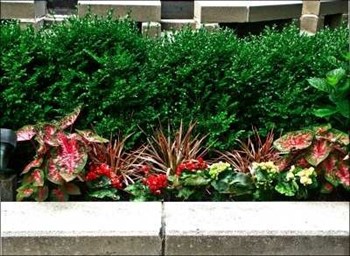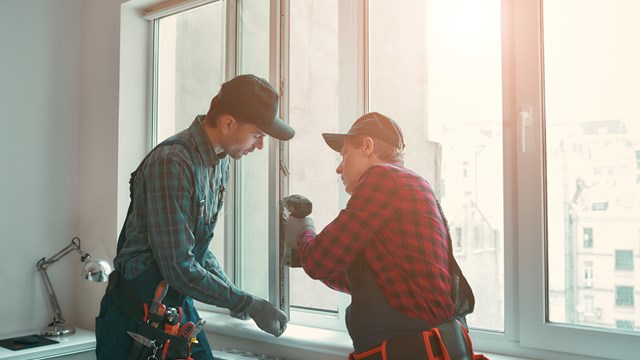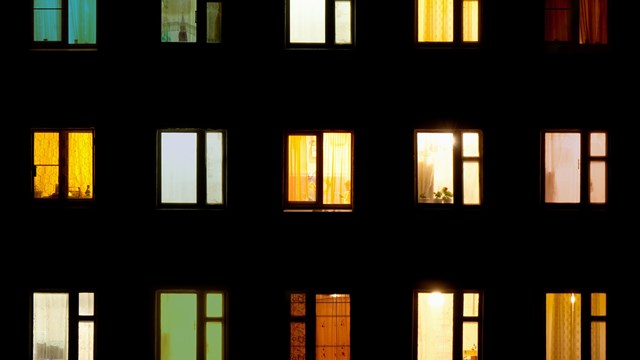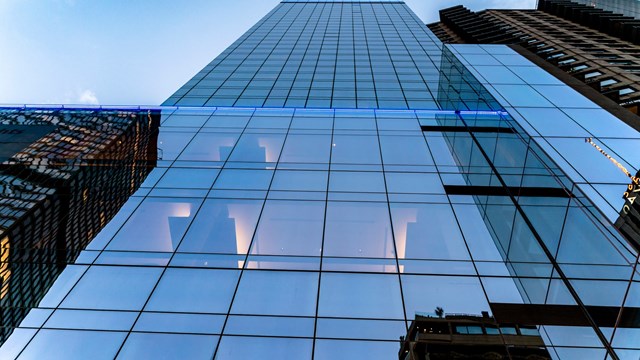
Curb appeal plays a large role in determining a property's value and it is the first thing anyone notices about your co-op or condo building. But beyond aesthetics, proper maintenance is necessary to protect residences, grounds and common areas from the elements. Consistent care also will prevent major problems from surfacing in the future. And a solid maintenance plan will help your community's bottom line, as you'll avoid costly problems altogether.
It Starts at the Curb
When looking to make your building more attractive, it's well to remember that, "The building starts at the curb," says Marilyn Sygrove, president of Sygrove Associates, a Manhattan interior design firm. "I think a lot of the design world has focused on interiors--but it really starts at the sidewalk. Also, when there's a boom in new construction and a brand-new building goes up several blocks away, people realize that their building doesn't look quite as good as the competition. It's a whole package."
New awnings can also go a long way toward sprucing up a building's exterior. Most awnings use a canvas or a vinyl material. Sygrove feels that canvas is the more elegant choice. "Most buildings stay with the traditional Park Avenue green canvas," she says, but adds, "We also see black and gray, and ever since Ralph Lauren did blue on 72nd Street, you see buildings that have blue awnings. Lighting is also very important in these awnings--there are safety issues for nighttime of course, but the lighting can also light up the graphic, the street number, and the name of the building. If there are no lanterns or sconces on the exterior of the building, the only lighting provided would be in the awning."
Keeping Things Green
Another sure-fire way to give your building's frontage a boost is by investing in some landscaping. While the term is usually used to describe large swaths of carefully-groomed lawn or sprawling gardens, "landscaping" can apply to the trees and flower planters outside your building. Well-maintained greenery and flowers can add a great deal of curb appeal and aesthetic value to a building. The key to success is knowing what you're planting and how to care for it.
According to Aaron Noorigian, owner of Environmental Landscape Design LLC, in Wall Township, New Jersey, neglected trees and plants can require serious time and labor to bring back to life. It depends on the particular situation, but there are several options available. "Sometimes trees and shrubs need severe pruning to cut them back," says Noorigian. "Other times, we have to remove plants because they're entangled in vines, or cut them right down to the ground."
"Sometimes it's possible to shape a plant or tree back up," Noorigian continues. "If plant life has only been neglected for about one year, it is usually possible to salvage with a lot of work. Beyond that, it will take quite a bit of time. Severe neglect can be very costly because more workers are needed and there is more debris to remove from the site."
Cleaning Up Sidewalk Clutter
Another type of debris--this one entirely man-made--may also be dragging down your building's appeal. Sidewalk clutter has always been an issue in New York City--it's made up of more than just trash, and it's more than just ugly. Sidewalks are often crowded with newspaper racks, overturned or overflowing trashcans, and other objects. In addition to being unsightly, sidewalk clutter can also pose safety risks for residents and passers-by alike.
According to Vanessa Gruen, director of special projects for the Manhattan-based Municipal Arts Society, news rack clutter has been a pet peeve of the art society for more than 10 years. "Have you ever seen co-op buildings and local block associations do really nice plantings around the trees and try and clean up their blocks and try and make it attractive in front of their co-op building, and then, whammo! A news rack gets placed smack dab among the tulips? It's very discouraging for co-op buildings and for block associations when that kind of thing happens."
According to Liberty Rees, a co-op shareholder and member of the East Side News Rack Safety Committee, "More news racks than ever are filthy--they're dilapidated, covered with graffiti, plastered with stickers, and routinely filled with garbage. They pose a myriad of safety problems and amount to visual pollution that...compromises our property values."
Echoing Rees' and Gruen's sentiments is Peter Grech, president of the New York Superintendents Technical Association (NYSTA) and a super and building manager.
"I hate those news racks," says Grech. "And as much as I am for freedom of speech, they are just ridiculous. I believe their owners should be forced to maintain them or lose them--and there should only be one or two per block, not six or seven of them in one location."
While errant news racks may be beyond the control of buildings and their managers and staff, there's plenty that individual buildings can do to keep their own frontages clean and attractive.
"Plants go a long way," toward beautifying the streetscape in front of a residential building, says Grech. "And you can ask permission from the city to repaint the blue and green mail boxes whenever they start looking beat-up. You can also get permission to paint the light-posts, street sign posts, and fire hydrants in front of your building."
Grech adds that any homemade signs taped to light-posts or mailboxes near your building should be removed by building staff after a couple of days, and tape residue should be scrubbed off. First and second-floor windows should be washed regularly, and windows, doors, and other ground-level building elements should be scrupulously maintained.
The Price of Neglect
Keeping things neat and attractive in front of your building should be an ongoing process. Kurt Christensen, president and owner of KondoKare Maintenance in Tinton Falls, New Jersey recommends that board/management teams keep an ongoing log or record of all maintenance items and review it at least quarterly to develop a sound care-and-maintenance plan. For example, certain tasks are seasonal and should be done at specific points during the year--you'll want to address the affects of the winter weather during the early spring months, and prepare your building for winter in early-to-mid autumn.
"In March or April check the roof, loose gutters, and anything that my have been affected by winter," says Christensen. "In early summer, you should check exterior coatings. Also check that any caulking around windows has not come loose."
"A regularly scheduled list of items to be inspected and maintained is at the core of any solid preventative or regular maintenance program. Second is a strong staff who are dedicated to this maintenance program," says Robin Habacht, a property manager and owner of Monticello Management, Inc. in Leonia, New Jersey.
It's also vital that your building's administrators figure curb appeal projects into their financial planning. While it's admirable to want to keep residents' monthly fees low, boards should not be wary of raising fees when it's clearly necessary.
"Some boards might want to keep maintenance fees the same rather than make sure appropriate services are performed," says Jules Frankel of Wilkin and Guttenplan, community association accountants in East Brunswick, New Jersey. "They cut maintenance out of budget, in the long run they en up hurting the community more. A primary responsibility of the board or association is to protect property values. Part of that is maintaining curb appeal so that people who are selling their units can maximize their return on investment. Not doing maintenance will result in poor curb appeal."
"Make sure [your board] creates realistic budgets that will cover the maintenance of the building," Frankel continues. "You have to look at living expenses as a whole. People understand that prices rise and the cost of living increases, so it's unrealistic to think that association fees aren't going to rise. Remember, the vendors that are performing services for you have to pay their employees more each year, and you'll want to prepare realistic budgets to reflect that."
Spending time--and perhaps a little money--on your building's curb appeal can be an investment in future value, as well as an acknowledgement of the value it has today. Aesthetically pleasing surroundings contribute to residents' quality of life, and their regard for their home. Consistent, regular maintenance will go a long way in boosting curb appeal and preserving value for your building community for many years to come.
Stephanie Mannino is a freelance writer and a frequent contributor to The Cooperator.






Leave a Comment